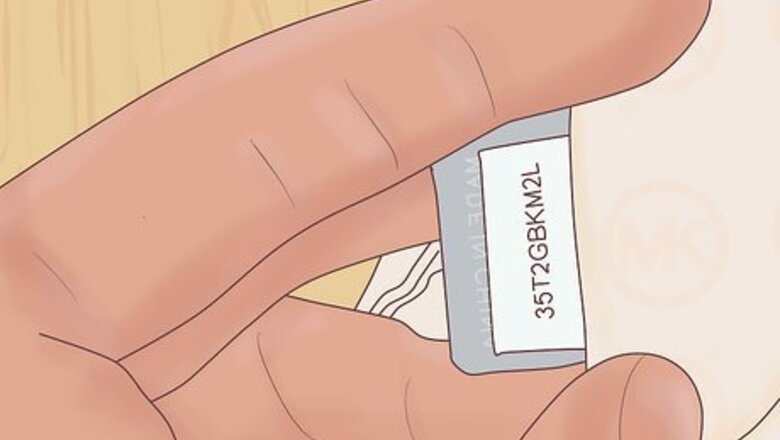
views
Examining the Tag

Look inside of the bag to find a high-quality tag. Search on the right side of the bag until you find a layered tag. Check that the bottom layer is gray and the top layer is white. Before you continue, check the front of the white tag and the back of the gray tag to make sure that there’s text printed on them. Older bags might have a leather tag with “Michael” and “Michael Kors” heat stamped on it. On these tags, there will be 2 lines of text, with the second line of text being smaller than the first.

Confirm that the top of the white tag has a 12-digit code. To verify this code, type it into a Google search bar to see what search results come up. Confirm that the correct model of bag shows up when you search the code. Keep in mind that the image results of the search might include different colors of your bag model.
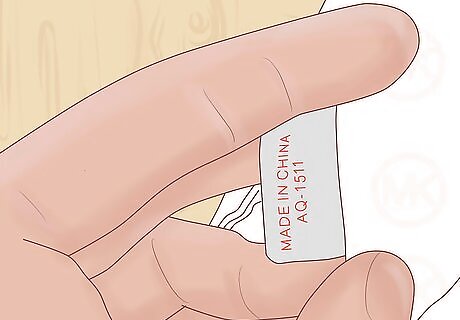
Examine the back gray tag for a 4-digit number. Note that the 4-digit indicates when the bag was made. Check that the tag also includes manufacturing information, like the factory location. For example, “1511” indicates that the bag was made in November 2015. Keep in mind that Michael Kors has factories in the China/Taiwan area, so a “Made in China” does not automatically mean that the bag is fake.
Observing the Quality of Materials
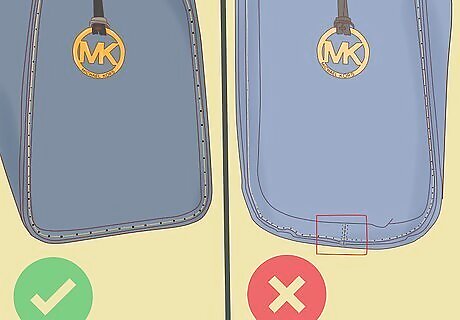
Flip the bag over to check for any frayed stitches. Check over all corners and creases of your bag to take a close look at the seams and stitches. Note that frayed, uneven stitches imply that the bag was made more hastily by a counterfeit seller. Don’t purchase any bags that lack in pristine and even stitching. Look up pictures of designer bags online for reference of what the stitching should look like. If you have another designer bag on hand, use that as an example.

Look around the zipper and see if the stitches are straight. Give special attention to the zippers of the bag, and take a look at the detail-work. Check to see if the zippers are held in place with overlapping stitches, or stitches that seem otherwise inconsistent. If this is the case, don’t purchase the bag. Because it takes a long and meticulous effort for official companies to stitch luxury bags at a high quality level, it’s easy for counterfeit sellers to stand out.

Touch and smell the material to see if it’s authentic. Lean in next to the bag and take a deep breath in. Keep the material in mind as you do this—while some materials won’t have a distinct scent, bags made of real leather will definitely smell earthy and rich. If the bag smells like plastic and doesn’t have a smooth finish, then it’s probably a fake. In some leather counterfeits, surface dying is used. If you can see a pinprick hole in the bag where the inner leather is a different color, note that the bag is probably a fake.
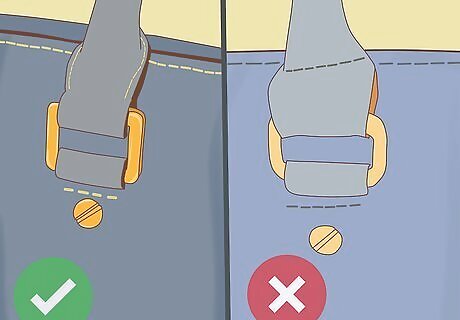
Search for high-quality stitching along the handles of the bag. Examine the straps on the side of the bag and see if they’re securely sewn onto the bed. Check for straight, vertical lines of stitching that attach the strap to the bag, instead of lopsided, horizontal stitches. Additionally, look for a short, horizontal line of 4 stitches beneath the buckle.
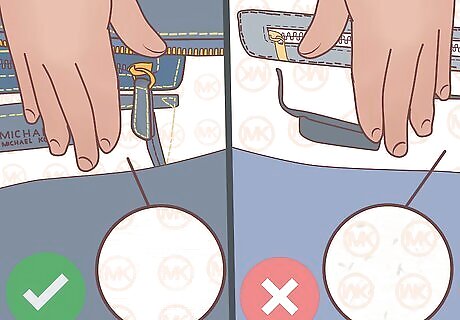
Examine the fabric used to make the bag’s lining. Stick your hand into the bag and gently stroke the fabric lining the inside. Make sure that the material feels soft and silky, and not scratchy in anyway. If the material looks and feels fake, then it probably is. The lining will have inner pockets attached, which are attached with triangular stitching along the corner of the seams.Tip: Michael Kors bags have a specific design on the inside of the bag where the “MK” logo is encircled and repeated across the fabric. Both the logo and the circle should be stitched in the same color.
Examining the Metalwork
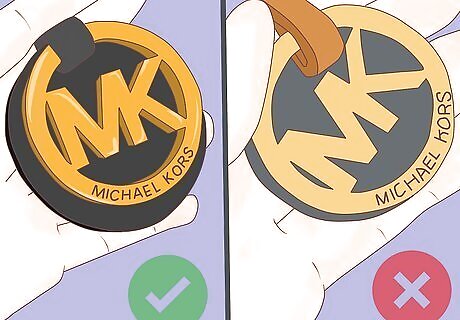
Check to see if the metal logo is polished. Look for a round, metallic logo dangling off the side of the bag. Pay attention to the details of the “MK” within the logo. If the metal edges seem puffy and lackluster, then there’s a good chance that the bag is a fake. When shopping for designer bags, remember that the Michael Kors logo is always made with crisp, unmistakable edges in the metalwork. If the metal looks like it’s chipped or damaged in some way, then the bag is likely a fake.

Hold the metal decorations in your hand to see how heavy they are. Clasp the metallic logo and the zipper pulls in your hand. While they won’t feel extraordinarily heavy, keep in mind that the metals used in Michael Kors bags feel heavier than the metals used in counterfeit bags. Still, don’t use this test as an end-all-be-all—just remember that weight can be a good indicator of a metal’s value. Most Michael Kors bags are made with high-quality metals, like brass and gold. However, some counterfeit producers try to make their products passable as the real thing by using luxury materials like gold and diamond.
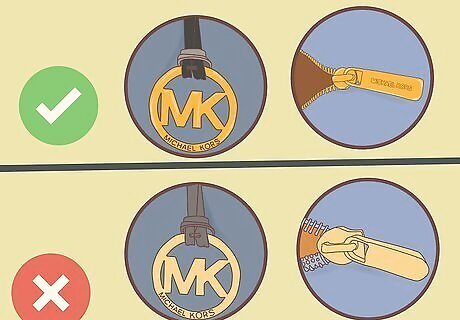
See if the engravings on the metal are polished and consistent. Lean in to take a closer look at the Michael Kors typeface that’s engraved into different pieces of metalwork. On the metallic logo, check that the “Michael Kors” text is centered beneath the “MK” of the logo. On metal zipper pulls, examine each letter to ensure that they’re even in size and shape. The engraved text on fake Michael Kors bags won’t be crisp and clear, and the letters might look stamped.

















Comments
0 comment